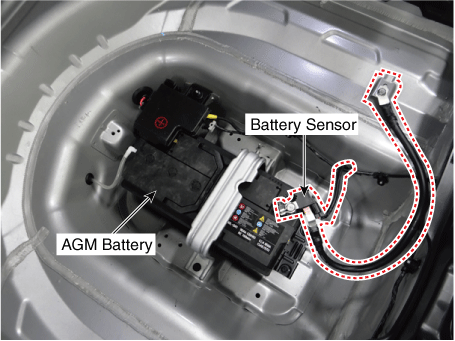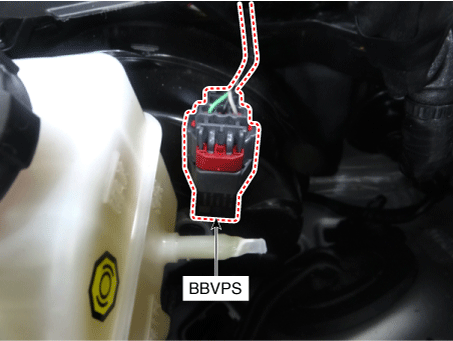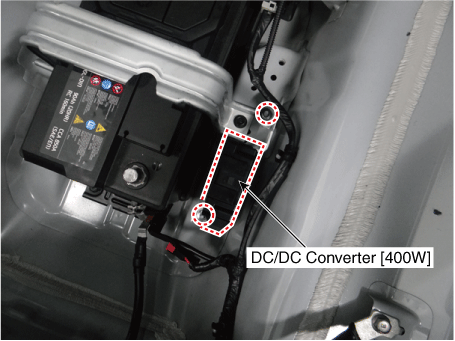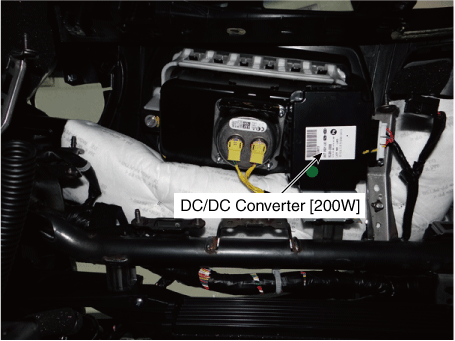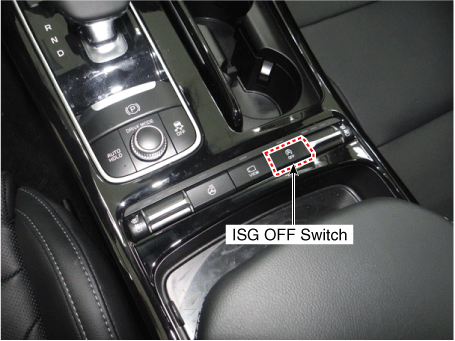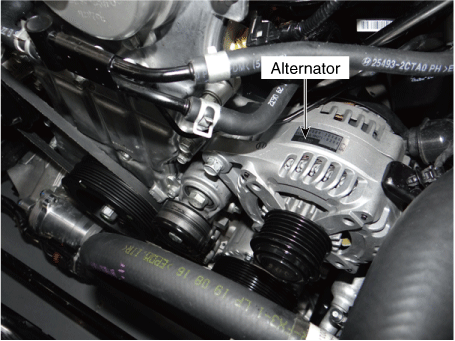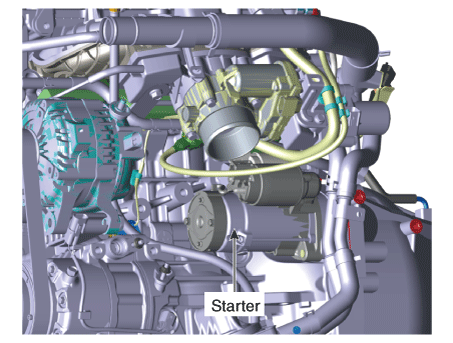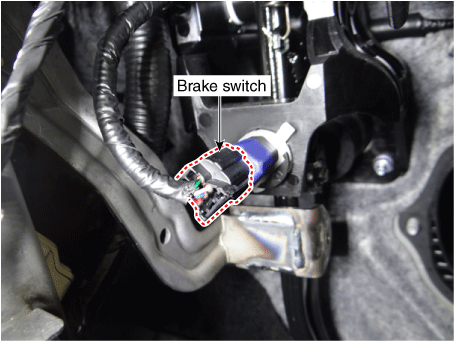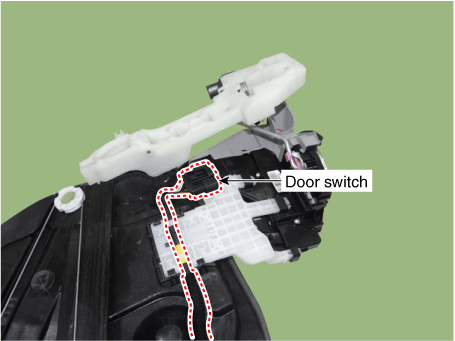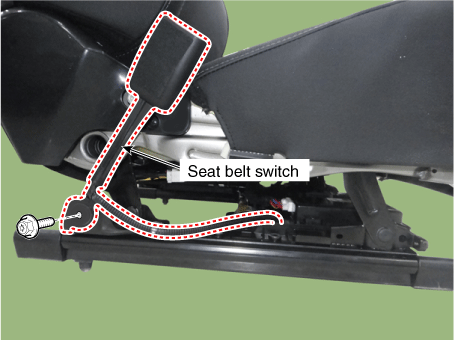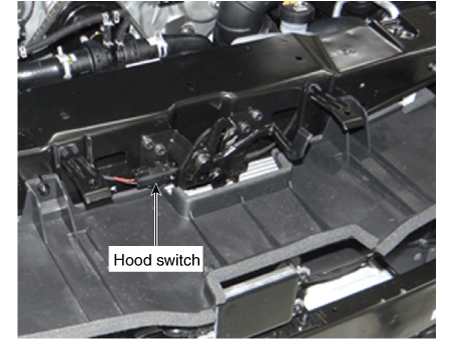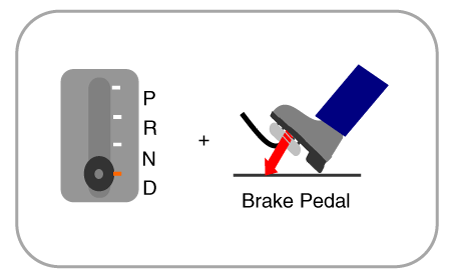Kia Stinger: Engine Control / Fuel System / ISG (Idle Stop & Go) System
Components and components location
| Components Location |
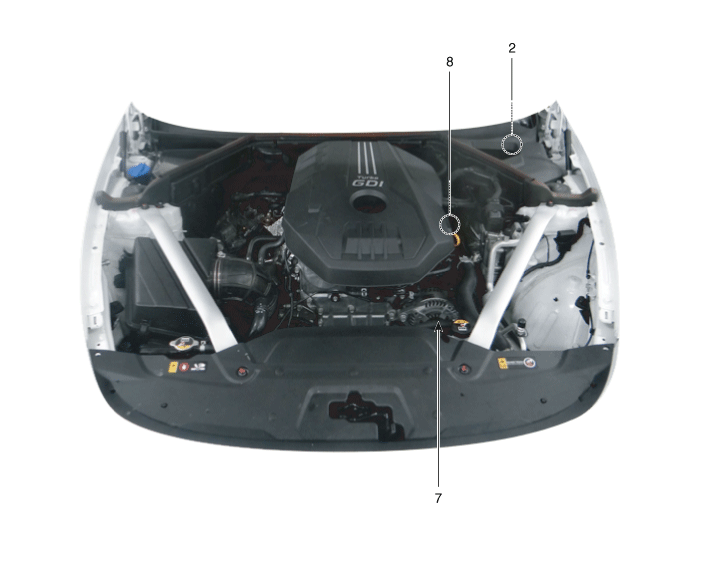
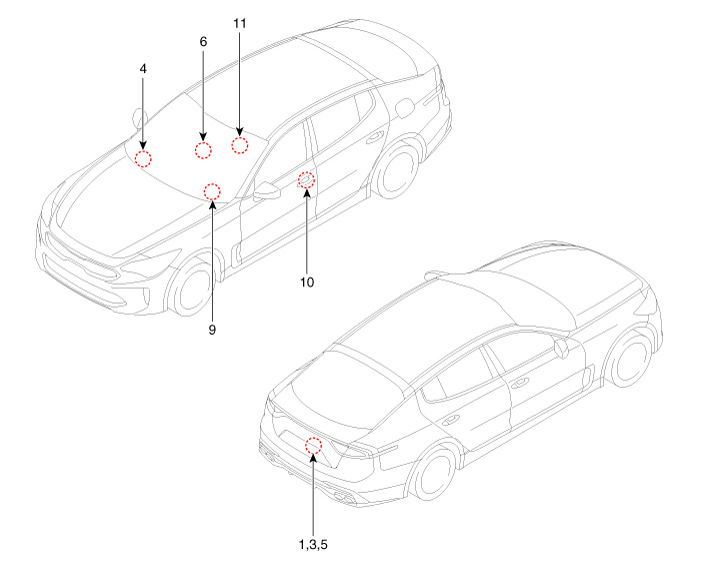
| 1. Battery
sensor 2. Brake Booster Vacuum Pressure Sensor (BBVPS) 3. AGM battery 4. DC/DC Converter [200W] 5. DC/DC Converter [400W] 6. ISG OFF Switch |
7. Alternator
8. Starter 9. Brake switch 10. Door switch 11. Seat belt switch 12. Hood switch |
|
1. Battery sensor 3. AGM battery |
2. Brake Booster Vacuum Pressure Sensor (BBVPS) |
|
|
|
|
4. DC/DC Converter [200W] |
5. DC/DC Converter [400W] |
|
|
|
|
6. ISG OFF Switch |
7. Alternator |
|
|
|
|
8. Starter |
9. Brake switch |
|
|
|
|
10. Door switch |
11. Seat belt switch |
|
|
|
|
12. Hood switch |
|
|
|
|
Description and operation
| Description |
Idle Stop & Go (ISG) system switches off the ignition when vehicle is stopped, and then restarts the ignition and starts the vehicle when accelerator is pushed. It temporarily stops the engine while waiting for signal or idling to improve fuel efficiency and reduce exhaust gas emission. However, ISG system may not operate if engine oil or ambient temperature is too low, or if 12V battery voltage is too low. The system can be deactivated by pushing the ISG OFF switch when the driver wishes not to use ISG system.
| Operation |
| Non - M/T |
How to use:
| 1) |
Engine Auto-Stop: D-range + brake pedal is pressed.
|
| 2) |
Engine Auto-Start (1) Brake pedal is released. (2) Brake pedal is pressed + Manual range (Sports mode) (3) Brake pedal is pressed + R range
|
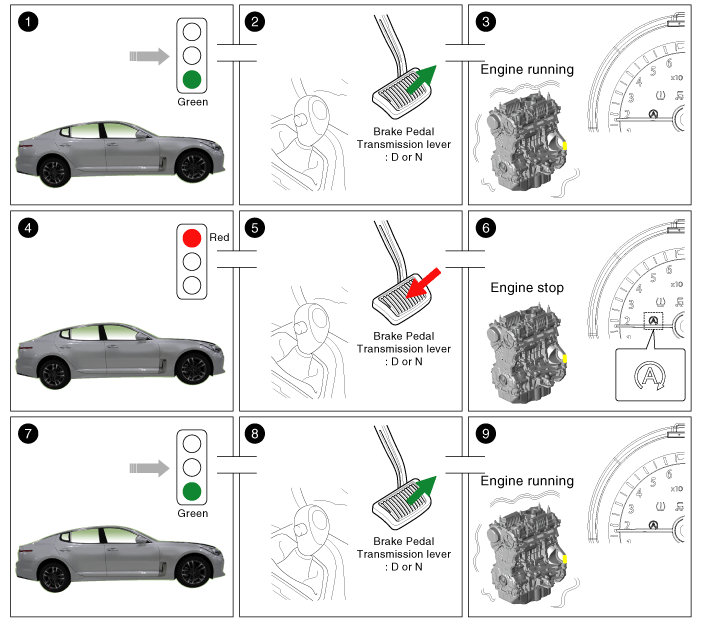
| 1. |
Vehicle moving. |
| 2. |
The transmission lever is in D. The brake pedal is released. |
| 3. |
The engine is running. (Vehicle is moving.) |
| 4. |
The driver brakes until the vehicle comes to a standstill. |
| 5. |
The transmission lever is in D. The brake pedal is pressed. |
| 6. |
The engine stops. The symbol "AUTO STOP" lights up in the instrument cluster. |
| 7. |
The driver wants to continue the journey. |
| 8. |
The transmission lever is in D. The brake pedal is released. |
| 9. |
The engine is running again. The symbol "AUTO STOP" goes out. |
Schematic diagrams
| Operating Condition for the ISG function |
| 1. Auto stop or Auto start condition |
▶ If all of the below conditions are satisfied
|
Component |
State |
Remark |
| ISG
OFF Switch |
OFF |
ISG OFF switch indicator lamp ->OFF |
|
Engine Coolant Temperature |
Over 30°C (86°F) |
|
|
Brake vacumm |
Below -35kPa |
|
| Drive
door, Seat belt, Hood |
Closed |
|
| EMS
state (TPS/CKP/CMP/WTS/Vehicle speed signal) |
Satisfied |
DPF Regeneration prohibited |
|
A/C System |
Satisfied |
|
|
Battery sensor [SOC: Over 78% Temperatuere:2-55°C(35.6 - 131°F)] |
Satisfied |
|
| ISG
related part error |
Does not occur |
|
| Vehicle
speed |
Entry the below 0kph after Over 8kph |
Prohibition the ISG System before 8kph |
|
Accelerator pedal |
OFF |
Engine auto stop condition |
| Brake
switch |
ON |
Engine auto stop condition |
|
OFF |
Engine auto stop condition |
|
|
Gear state |
N (Neutal)/ D |
Engine auto stop condition |
|
R/ 1/ 2 |
Engine auto stop condition |
In congested areas, if the driver wishes to stop the vehicle and change lever from D→N, the ignition will turn OFF. |
| 2. Restriction conditions for Auto stop or Auto start |
▶ If one of the following conditions is met, the ISG system will not operate properly.
|
Component |
Conditions |
Remark |
|
ISG OFF swtich |
ON |
ISG OFF switch indicator state |
|
EMS State (TPS/CKP/CMP/WTS/Vehicle speed signal etc.) |
Dissatisfied |
DPF Regeneration prohibited |
|
Driver side door, seat belt, hood state |
Open |
|
|
Brake vacumm |
Over -35kPa |
|
|
A/C State |
Dissatisfied |
|
|
Battery sensor (SOC: Over 78%, Temperature: 2 - 60°C)) |
Dissatisfied |
|
|
ISG system error |
Occurred |
|
|
Steering wheel |
Greater the angle |
|
|
A/C System |
A/C switch ON, FATC over 6, MTC over 3 |
|
|
Defrost |
Defrost switch ON |
|
|
etc. |
Downhill, steep uphill |
|
|
Operate the SPAS |
|
| 3. onditions for forced restart (If none of the below condition is not satisfied) |
|
Component |
Conditions |
Remark |
|
Safety requirements |
Low pressure for braking system |
Over -35kpa |
|
Low battery voltage |
Maintain excessive electrical load for 3 minutes |
|
|
Active defroster of front glass |
|
|
|
Inertial speed over 1.5 km/h (on downhill) |
|
|
|
Door open or driver side seat belt unfastened |
Brake Pedal Pressed |
|
|
Ignition switched ON with hood open |
|
|
|
Engine stopped for long |
After 300 seconds |
|
|
Vehicle parted on a steep slope |
|
|
|
Convenience requirements |
A/C ON, FATC over 6, MTC over 3 or HVAC performance dissatisfied |
|
|
ISG OFF' button pressed |
|
| 4. Restriction conditions for Auto-Stop operation |
|
Conditions |
State |
Remark |
| Driver
side door, seat belt, hood state (Brake OFF state) |
Open |
Start by using "ignition switch" or "button start key" (only) |
| CAN
error (TCU, FATC/Cluster) |
Occurred |
|
| EMS
state(TPS/CKP/CMP/WTS/Vehicle speed signal) |
Dissatisfied |
In case of error during idle stop, the engine can only be started by using the key. |
The ISG system is strongly networked with the power management. In the event of battery replacement, disconnection of the battery terminal or after changing the engine management system, the reference data regarding the battery charge state and battery condition can be lost. Battery sensor can be reactivated by parking for approximately 4 hours after connecting the negative (-) battery terminal to the battery. |
ISG system deactivation by fault.
When the ISG related sensors or system error occurs, the ISG OFF switch lights up. Especially when the battery sensor is replaced or reinstalled, the vehicle must be placed in the ignition switch OFF for about 4 hours for recalibration. The ISG function should operate properly in approximately 4 hours. However, for the first 25 times, the ISG function will operate regardless of recalibration. |
When the engine is in idle stop mode, it can be restarted without the driver taking any action. Before leaving the car or doing anything in the engine room area, stop the engine by turning the ignition key to the LOCK position or removing it. |
- Battery sensor
- Brake Booster Vacuum Pressure Sensor
- AGM Battery
- DC/DC Converter
- ISG OFF switch
- Alternator
- Starter
- Brake switch
- Door switch
- Seat belt switch
- Hood switch
 Electric Waste Gate Actuator (EWGA)
Electric Waste Gate Actuator (EWGA)
Description and operation
Desrcription
Installed on the turbocharger, the Electric Waste Gate Actuator (EWGA) operates
the vane in the Waste Gate Turbocharger (WGT) and regulates the c ...
 Battery sensor
Battery sensor
Description and operation
Description
For various control units installed on the vehicle to function based on the signals
from various sensors, stable power supply is essential. ECM co ...
Other information:
Kia Stinger CK 2018-2025 Service Manual: Battery sensor
Description and operation Description For various control units installed on the vehicle to function based on the signals from various sensors, stable power supply is essential. ECM controls generating voltage by duty cycle based on the signals on voltage, current and temperature o ...
Kia Stinger CK 2018-2025 Service Manual: TPMS Receiver
Description and operation Operation 1. General Function • Auto-learn takes place only once per Ignition cycle. • On successful completion, 4 road wheel sensor ID's are latched into memory ...

